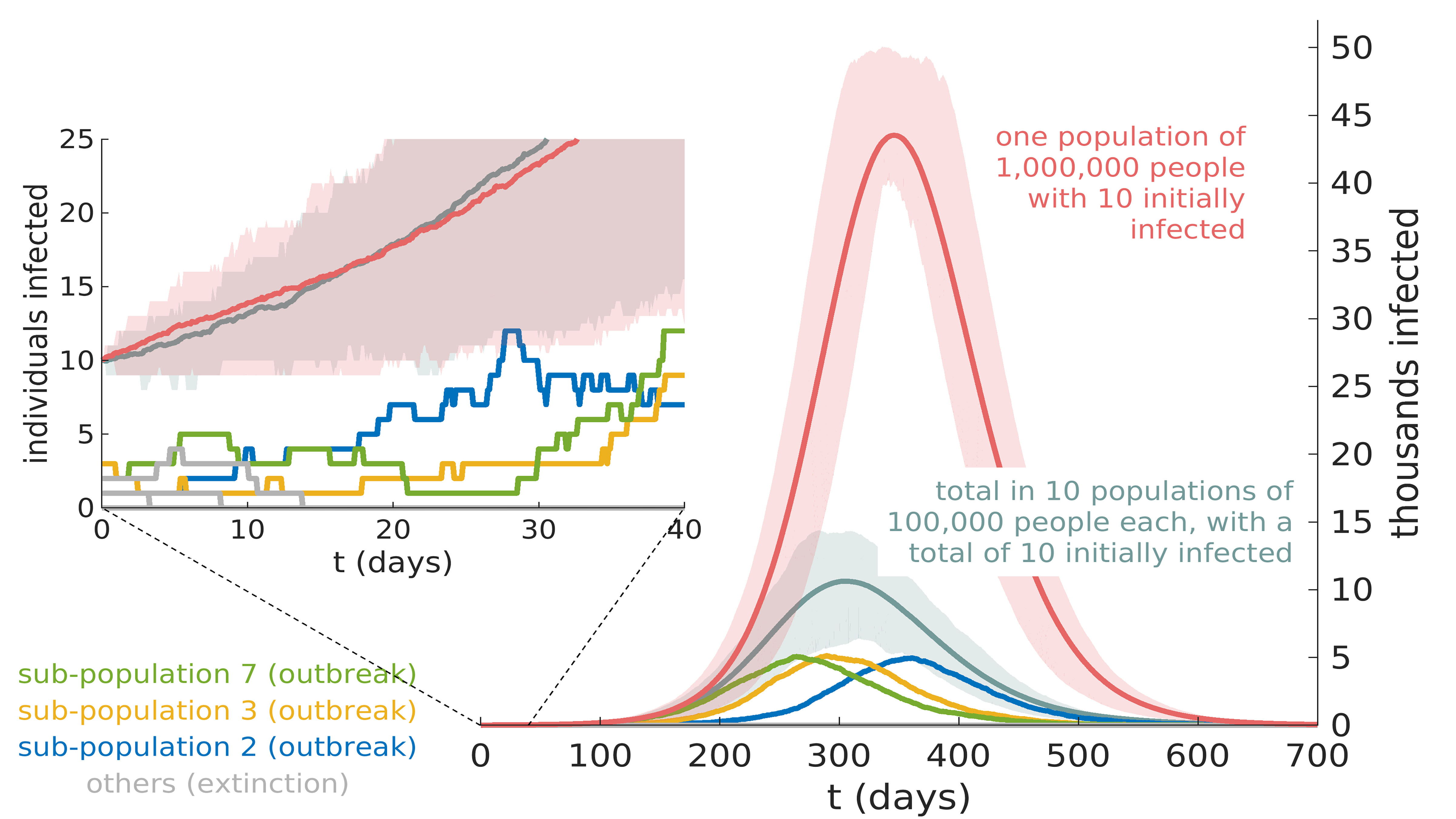To control an epidemic, authorities will often impose varying degrees of lockdown. In the journal Chaos, scientists have discovered, using mathematics and computer simulations, why dividing a large population into multiple subpopulations that do not intermix can help contain outbreaks without imposing contact restrictions within those local communities. When infection numbers are high, random effects can be ignored. But subdividing a population can create communities so small that the random effects matter.

